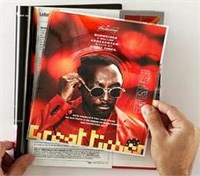The return of vinyl

Vinyl effectively died out in mainstream music in the early '90s as compact disc technology became cheaper and more widespread, but in recent years the medium has experienced a phenomenal global renaissance. Limited edition vinyl pressings have become the medium of choice for many independent bands and record labels, helping to add a touch of hipster class to an already classic and classy format.
Budweiser has partnered up with the American rapper, musician, songwriter, singer, entrepreneur, actor, DJ, producer and brand endorser of note known as Will.i.am, to take part in its latest "Great times are coming" campaign in Brazil, which sees the return of vinyl records in 'print'.
It's time for the 'Good Times'
As a member of the Black Eyed Peas, Will.i.am has become internationally famous on the club music scene - a space that is normally the choice of spirit or caffeinated drinks brands. But to help promote the idea of Budweiser as a party drink, and not just something that was enjoyed in front of the TV or during football games, the beer brand decided to share a free music track - 'Good Times' - with potential consumers.
Normally, this would mean some kind of coupon redemption code/download mechanism, but in a move that has rarely been seen since the 1980s, Budweiser chose to share the track as a polyvinyl print ad that could be played on a record player, bring new meaning to the idea of sound in print.
The original idea of disposable records printed on lightweight 'cellodiscs' first emerged in 1930, where they could be purchased from news stands like magazines, and vinyl soundsheet magazines were reasonably popular between 1965 and1985.
An alternative version of the ad featured rudimentary integrated speakers, which could be connected to a smartphone. The user then scanned a QR code on the page to unlock the track.
Source: Cream: Inspiring Innovation
Cream is a curated, global case study gallery of excellence, providing the marketing community with the latest trends and inspiration to help grow their business.
Go to: http://www.creamglobal.com



















